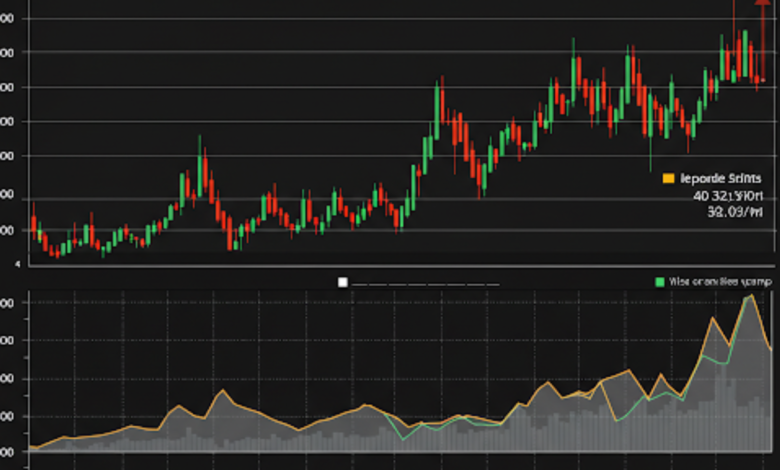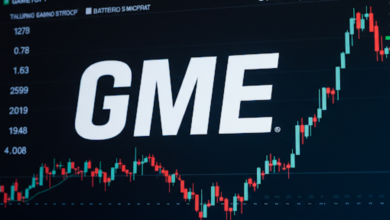Understanding Apple Stock Split: What It Means for Investors

1. Introduction
Apple Inc. has become a household name over the years, not just for its innovation in the tech world but also for its extraordinary performance in the stock market. apple stock split As one of the most valuable companies in the world, Apple frequently garners the attention of investors and stock market enthusiasts alike. But what happens when a company like Apple decides to split its stock? In this article, we will break down what a stock split is, how it has affected Apple’s past stock performance, and what it means for investors when Apple announces such a move.
A stock split, in simple terms, is when a company increases the number of its outstanding shares by issuing more shares to current shareholders, without changing the total value of their investment. This typically results in a lower share price but does not affect the value of an investor’s holdings. For example, if you owned 100 shares priced at $1,000 each and the company announced a 2-for-1 stock split, you would end up with 200 shares priced at $500 each. While this makes the stock more affordable for a broader range of investors, it doesn’t directly alter the company’s total market value.
The purpose of this article is to explore Apple’s stock split history, how it impacts investors, and why it’s a key event in the world of finance. By the end of this article, you will have a comprehensive understanding of Apple stock splits and their significance for the market and individual shareholders.
2. What is a Stock Split?
A stock split is a corporate action that occurs when a company decides to divide its existing shares into multiple new shares to increase the number of shares in circulation. Stock splits are typically carried out by companies whose share price has grown significantly, making their stock less affordable to individual investors. By splitting the stock, the company can make it more accessible to a wider pool of investors, especially retail investors.
There are two main types of stock splits: forward splits and reverse splits. A forward stock split, which is the more common type, results in the increase of shares while simultaneously decreasing the stock price proportionally. For instance, in a 2-for-1 forward split, shareholders receive an additional share for every share they already own. This splits the share price in half but leaves the total value of the investment unchanged.
On the other hand, a reverse stock split occurs when a company consolidates its shares, reducing the number of outstanding shares but increasing the stock price. A reverse split is usually employed when a company’s stock price has dropped too low, often in an effort to boost the perceived value of the stock and attract institutional investors.
Companies typically opt for stock splits to increase liquidity, attract more investors, and maintain their market competitiveness. Stock splits can also signal that the company is experiencing strong growth, which can generate positive sentiment among investors.
3. Historical Background of Apple Stock Splits
Apple has a long history of stock splits, starting back in 1987. The company has executed a total of five stock splits in its history, with the most recent being the 4-for-1 stock split in 2020. Each of these splits had its own reasons and impact on the stock price and shareholder value. Let’s take a look at some of these key splits in Apple’s history.
- 1987: Apple’s first stock split occurred in 1987, when the company executed a 2-for-1 split. At the time, Apple was relatively young, and its stock price was rising rapidly. This split helped lower the share price to a more attractive level for new investors.
- 2000: Apple’s second stock split was another 2-for-1 split. During this period, Apple was transitioning from being a niche computer company to a more mainstream tech player, and the split allowed the company to remain accessible to a broader range of investors.
- 2005: In 2005, Apple announced a 2-for-1 split for the third time. This split occurred when Apple was in the midst of a major growth phase, thanks to the success of its iPod and the early stages of the iPhone’s release. The stock was trading at a price high enough that a split was seen as a positive move to keep the stock within reach of individual investors.
- 2014: Apple executed a 7-for-1 stock split in 2014, which was one of the company’s most significant moves. By increasing the number of shares and lowering the stock price, Apple made its stock much more affordable to investors. The result was a surge in trading volume and broader participation in its market performance.
- 2020: The most recent stock split, a 4-for-1 split, took place in August 2020. This split came at a time when Apple’s stock price was soaring, driven by the increasing demand for its products and services, as well as investor optimism. The 2020 split allowed Apple to keep its stock price in a range that appealed to both institutional and retail investors.
Each of these stock splits played a role in Apple’s stock market journey, helping to fuel the company’s growth and maintain investor interest.
4. The 2020 Apple Stock Split
The 2020 Apple stock split was perhaps one of the most noteworthy splits in the company’s history. Announced in July 2020, the company declared a 4-for-1 stock split, which meant that shareholders would receive three additional shares for every share they held. This brought Apple’s share price down from over $500 to approximately $125 per share.
Apple’s decision to split its stock came after a period of strong growth and market performance. By mid-2020, Apple was already one of the most valuable companies in the world, and its stock had seen impressive gains. The 4-for-1 split made the stock more affordable and accessible to a wider range of investors, especially smaller retail investors who had been priced out of buying Apple shares when the stock was over $500 each.
The decision to split the stock was also seen as a move to increase liquidity in the market. Apple’s stock price had been climbing steadily, and by splitting the stock, the company aimed to ensure that it remained an attractive investment for both institutional and retail investors. After the split, Apple’s stock price did see a temporary dip but quickly rebounded, showcasing the continued strength of the company in the market.
From an investor’s perspective, the 2020 stock split was a welcome event, as it allowed for more affordable entry points into Apple’s stock. However, it’s important to note that the stock split did not increase the overall value of the company. While shareholders received more shares, the total market value of their holdings remained the same. The split was primarily a cosmetic change to make the stock more accessible without altering the fundamentals of the company.
5. The Effects of a Stock Split on Investors
For investors, stock splits can have both short-term and long-term effects. While stock splits don’t directly impact the value of a company, they can have a psychological effect on the market, often driving investor sentiment and influencing stock prices.
Short-Term Effects
In the short term, stock splits can create a surge in demand for the stock. Retail investors, in particular, may see the lower price per share as an opportunity to purchase stock they previously couldn’t afford. This increased demand can lead to a temporary increase in the stock price, although this doesn’t necessarily indicate a fundamental improvement in the company’s financial position.
For instance, after Apple’s 4-for-1 split in 2020, many investors were excited to buy the stock at a more affordable price. The immediate impact was an increase in trading volume and heightened interest in Apple’s stock. However, over time, the stock price adjusted to reflect its true market value based on company performance, rather than simply the split.
Long-Term Effects
In the long term, stock splits can make a stock more liquid, which may help with price stability. It’s also worth noting that stock splits can help a company maintain its competitive position in the market. As Apple has proven over the years, stock splits can be part of a broader strategy for growth, as seen in its strong performance following each split.
However, it’s crucial for investors to remember that a stock split doesn’t change the underlying fundamentals of the company. The company’s earnings, growth potential, and business strategy remain the primary drivers of its stock price. Therefore, while a stock split can make the stock more appealing to investors, it’s not a guarantee of future success.
6. Conclusion
In conclusion, Apple’s stock splits over the years have been significant events for the company and its investors. While stock splits don’t directly increase a company’s value, they can make the stock more accessible to a wider range of investors, increase liquidity, and drive short-term enthusiasm in the market. The 2020 4-for-1 stock split was a strategic move that helped Apple maintain its position as one of the most valuable companies in the world.
For investors, stock splits are an opportunity to buy shares at a lower price, but they should not be seen as an indicator of increased value or growth. Understanding the true impact of a stock split requires looking beyond the immediate price adjustments and focusing on the company’s fundamentals and long-term prospects.
7. Frequently Asked Questions (FAQs)
What happens to my Apple shares if the stock splits?
After a stock split, you will receive additional shares, but the total value of your investment will remain the same. For example, in a 4-for-1 split, you will have four times the number of shares, but each will be priced at a quarter of the previous value.
Will Apple’s stock split affect its market value?
No, a stock split doesn’t change the company’s overall market value. It simply increases the number of shares in circulation while decreasing the price per share.
Can I sell my shares immediately after a stock split?
Yes, you can sell your shares immediately after a stock split, just like any other shares. However, be aware that the stock price might adjust shortly after the split.
How do stock splits impact dividend payments?
After a stock split, your dividend payments will be adjusted according to the new number of shares you own. The total dividend payout will remain the same, but you’ll receive smaller payments per share.
What is the difference between a stock split and a stock dividend?
A stock split increases the number of shares outstanding, while a stock dividend is a payout in the form of additional shares without affecting the overall stock price.
Does a stock split make Apple a better investment?
A stock split doesn’t change the fundamentals of a company, so it doesn’t make Apple a better investment. However, it can make the stock more accessible to a larger pool of investors.
Can a stock split affect my taxes?
Generally, stock splits don’t directly impact taxes, but it’s always a good idea to consult with a tax professional to understand any potential tax implications based on your individual situation.
Will Apple split its stock again in the near future?
While there’s no certainty, Apple may consider another stock split if its share price becomes too high. However, any decision would depend on various factors, including the company’s growth and market conditions.
You May Also Read: https://bigbestwire.com/kens-place-menu/




